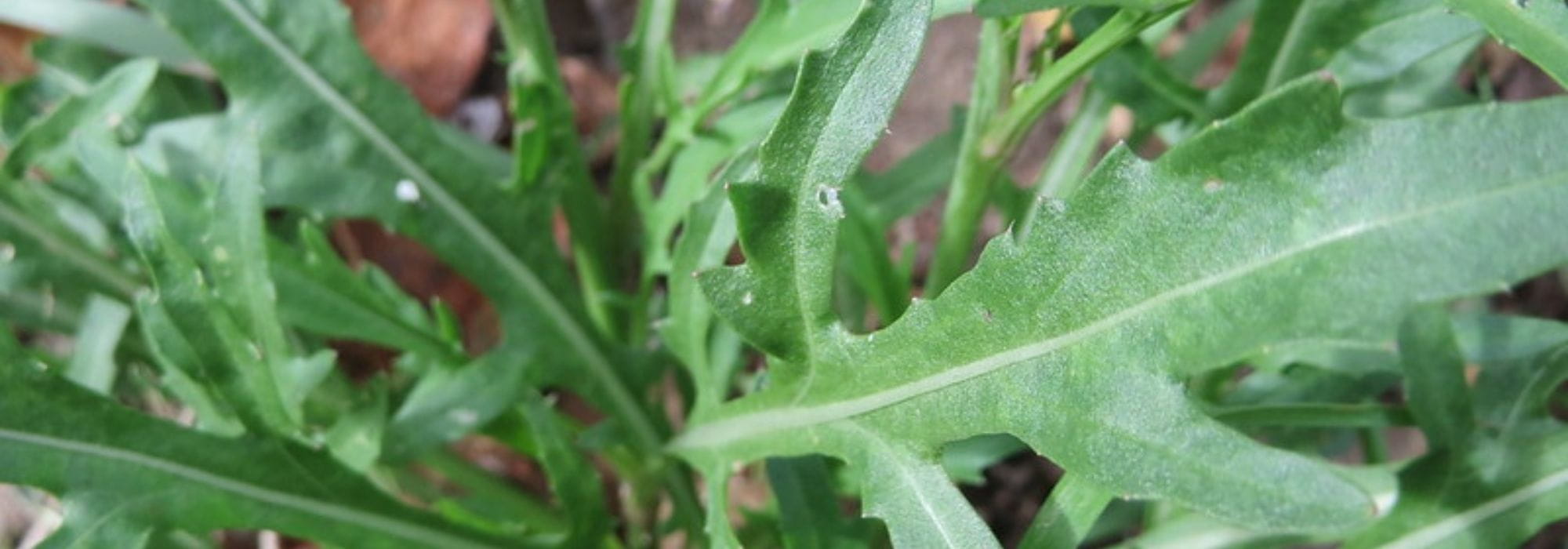
Rocket: sowing, growing and harvesting
Contents
Rocket in a nutshell
- Rocket is a young plant known for its leaves with a spicy and slightly peppery flavour.
- A plant from the Brassicaceae family, rocket is divided into two genera: wild rocket belongs to the genus Diplotaxis, while cultivated rocket is related to the genus Eruca.
- Rocket prefers rich, cool, and well-drained soils.
- This salad, widely used in mesclun, enjoys a partially shaded position and regular watering.
- By staggering the sowing and regularly harvesting the leaves, it is possible to harvest rocket for several months, provided it is protected from the cold.
A word from our expert
Since the 1980s, with the boom of mesclun in the fresh produce aisles of supermarkets, rocket has made a culinary comeback. Often associated with Mediterranean cuisine, this vegetable plant is easily recognised by the peppery and spicy flavour of its long, multilobed leaves. Rich in fibre, antioxidants, and vitamins, rocket certainly deserves its place on our plates. But also in the vegetable garden…
The gardener also appreciates this salad for its ease of cultivation. In the vegetable garden, two main varieties are grown, each with a slightly distinct taste. The leaves of wild rocket (Diplotaxis erucoides) are often less tender and have a stronger flavour than those of cultivated rocket (Eruca sativa). Similarly, cultivated rocket benefits from a faster growth rate.
Sowing of rocket takes place from April to June, as soon as the soil reaches a temperature of 16 °C, and resumes in September for a winter harvest. Not fond of high temperatures that encourage bolting and make the leaves tougher, rocket requires regular watering. As for the harvest, it stimulates the growth of new leaves.
Description and Botany
Botanical data
- Latin name Eruca sativa or Diplotaxis erucoides
- Family Brassicaceae
- Common name wild rocket, cultivated rocket, rocket, riquette, eruca
- Flowering autumnal
- Height up to 50 cm
- Exposure partial shade or sunny
- Soil type ordinary, rich, cool and well-drained
- Hardiness down to -12 °C
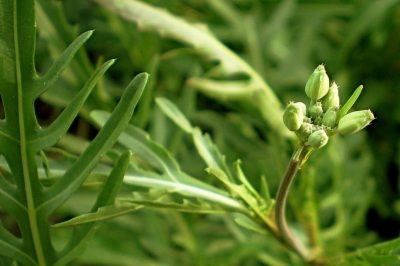
Wild rocket
Indubitably, wild rocket adds a touch of spice to a simple salad. Certainly originating from the Mediterranean basin and known since antiquity, wild rocket is a salad with character. The Greeks, Romans, and Turks consumed it as a salad or condiment, often enjoyed during festivities.
They also attributed medicinal and even aphrodisiac properties to it. The fertility god Priapus was honoured with offerings of rocket leaves. This reputation has persisted through the centuries, as in the Middle Ages, rocket was banned from monastic gardens! Later, however, it was mentioned in the Capitulaire de Villis, which listed plants to be cultivated in castle gardens. By the end of the 20th century, in the 1980s, wild rocket regained its nobility and flooded the fresh produce aisles of supermarkets, riding the trend of mesclun, a southern-origin mix of young shoots. Consumers rediscovered it alongside leaves of lettuce, endive, or lamb’s lettuce, as well as shoots of spinach, purslane, or beetroot.
Wild rocket belongs to the Brassicaceae family (formerly Cruciferae), which includes many vegetable plants such as cabbage, turnip, mustard, and radish… It is safe to say that Brassicaceae are part of the category of plants used for both culinary purposes and for their oil, condiment, medicinal, and even fodder properties. It is an herbaceous plant that, in its natural state, grows in fallow or uncultivated land, often considered adventive. Its cultivated version delights gardeners. For wild rocket has the particularity of designating two somewhat different species: wild rocket belongs to the botanical genus Diplotaxis while the cultivated version is related to the genus Eruca sativa. Besides this genus distinction, the flavour of these two rockets differs slightly. Wild rocket has a more pronounced taste and smaller, thinner leaves. Cultivated rocket offers more tender leaves, with a milder, less peppery flavour.
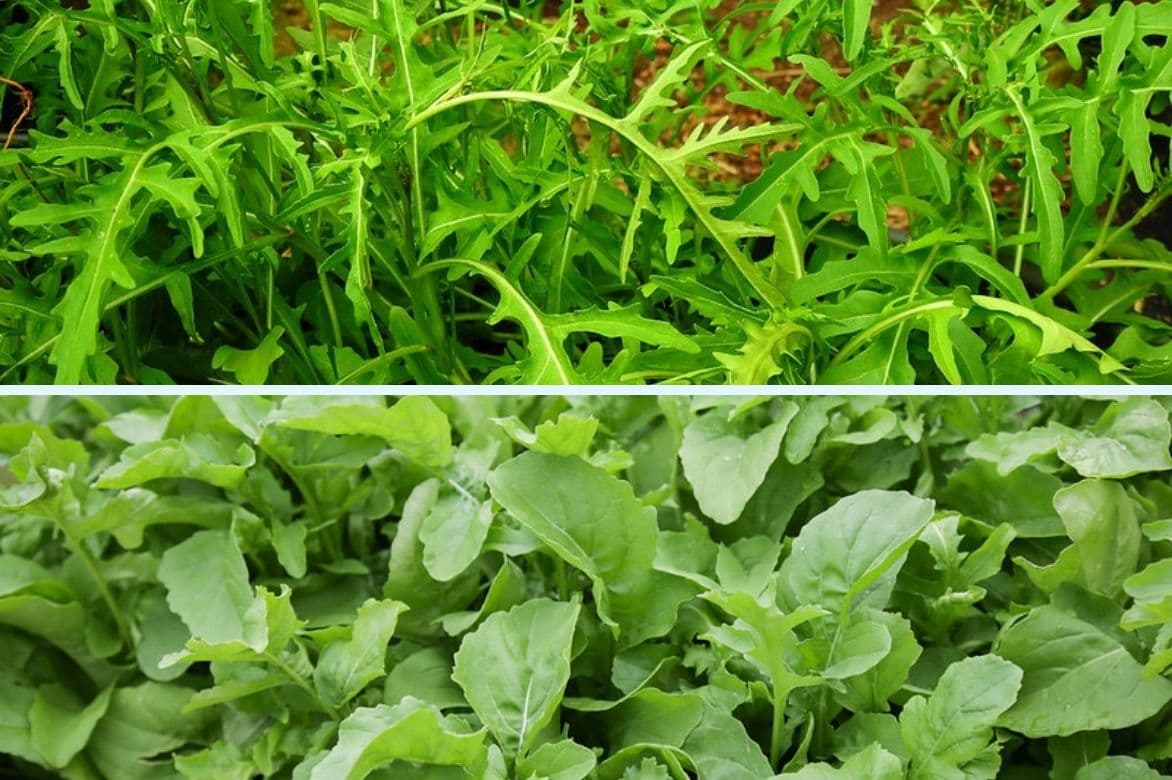
Depending on the varieties, the leaves of rocket are more or less lobed and more or less pungent
Wild rocket is an herbaceous and vegetable plant with upright, branching stems measuring 20 to 60 cm. Its foliage is thick, fleshy, and multilobed. The dark green leaves are dentate at the margins, pinnatifid (symmetrically cut on either side of the midrib), and composed of oblong lobes. It is the juvenile leaves that are consumed, as older leaves become tougher and more bitter. The shape of rocket leaves is quite similar to that of dandelion leaves.
At the end of summer, whitish to yellowish flowers, veined with brown or purple, emerge. They are grouped in a raceme (simple inflorescence) at the top. Each flower has 4 sepals and 4 spatulate petals that form a cross.
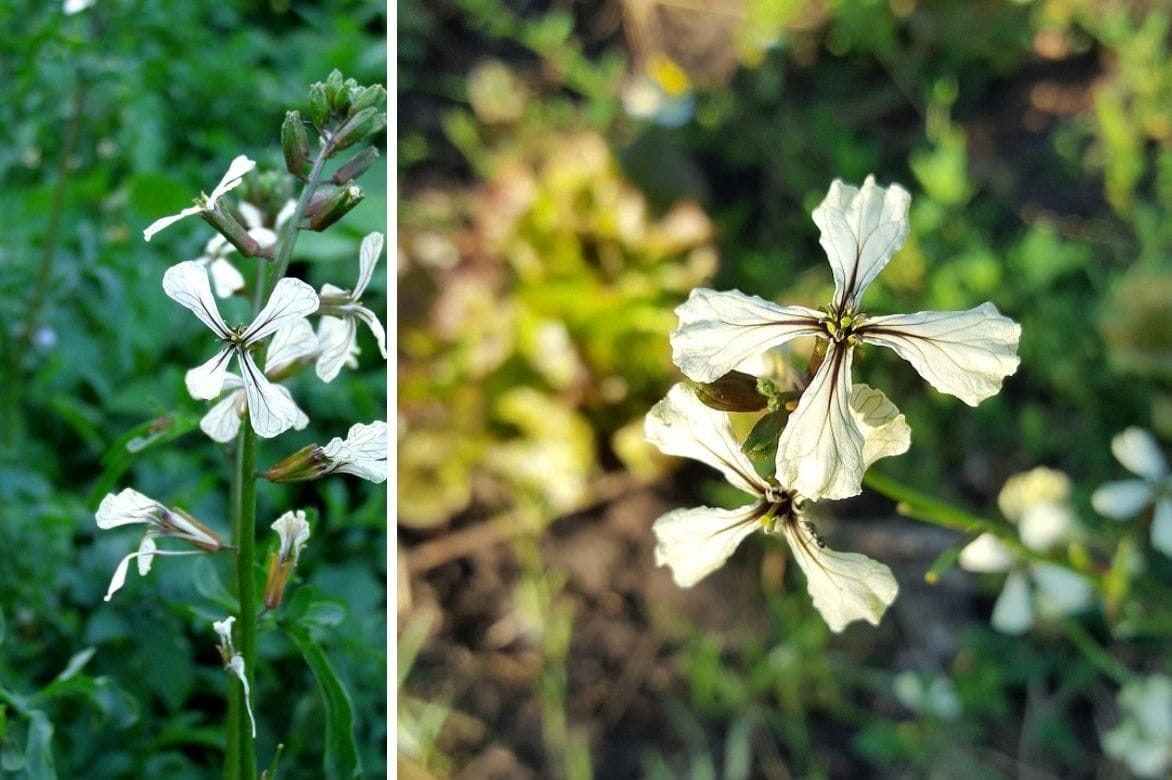
The cream flowers of rocket bloom at the end of summer
Rich in the same flavour as the leaves, these flowers are also edible. After the flowers, globular seeds appear that naturalise quite easily.
Read also
How to sow seeds on seed tape?The different varieties of rocket
In terms of rocket, you have plenty of choices! On one hand, cultivated rocket or garden rocket (Eruca sativa) has broad, tender leaves with a delicate peppery flavour and a hint of nuttiness. Various cultivars are distinguished, such as Eruca sativa ‘Astra’, a vigorous English variety with finely cut leaves, or Eruca sativa ‘Sweet Oakleaf’, another English variety with a mild flavour.
On the other hand, wild rocket (Diplotaxis erucoides) produces thinner but tougher and thicker leaves, and especially has a very peppery flavour. Its development is much slower, but it is slower to run to seed and more hardy.
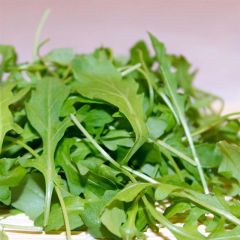
Rocket - Arugula
- Height at maturity 15 cm
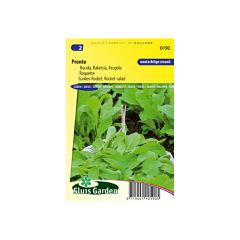
Rocket Pronto - Arugula
- Flowering time July to October
- Height at maturity 30 cm
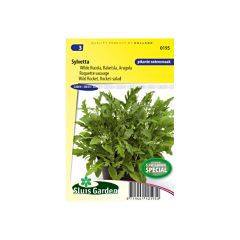
Wild Rocket Sylvetta - Arugula
- Flowering time July to October
- Height at maturity 20 cm
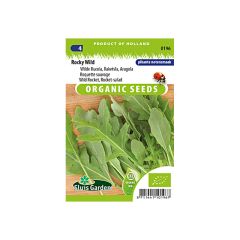
Wild Rocket Rocky Wild - Arugula
- Flowering time July to October
- Height at maturity 20 cm
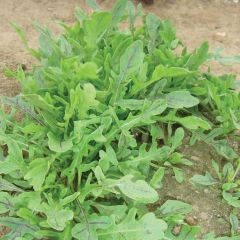
Wild Rocket Dragons Tongue - Arugula
- Flowering time June to October
- Height at maturity 20 cm
Discover other Rocket
View all →Available in 1 sizes
Available in 1 sizes
Available in 1 sizes
Available in 1 sizes
Available in 1 sizes
Available in 1 sizes
Available in 1 sizes
Available in 1 sizes
Available in 1 sizes
Available in 1 sizes
Rocket planting
Where to plant?
Rocket thrives in well-drained, airy, cool, and fertile soils. As for the type of soil, it is indifferent to it.
However, it is a bit more demanding regarding orientation. In the height of summer, rocket prefers partial shade as the intense heat enhances the spiciness of its leaves and causes it to bolt. In spring and late summer, it prefers a sunny spot. This is why rocket is ideally sown in the shade of tomatoes, aubergines, or climbing beans and peas. Additionally, rocket takes up little space in the vegetable garden, so it can be sown in any small free area.
In the vegetable garden, all vegetables can be grown in the vicinity of rocket.
When to plant?
In open ground, rocket sowing occurs at two distinct times. You can start sowing as early as the end of March in regions where frosts are no longer a concern and until the end of June, early July. Sowing will stop during the intense summer heat and resume in September and October for a winter harvest. Of course, the plants should be protected with a cover as soon as temperatures drop.
Rocket can also be sown in a greenhouse or in pots.
To have staggered harvests, sow every two weeks.
How to sow?
Rocket can be sown in rows or broadcast directly in place. You can also try sowing in pots with some precautions.
Sow in rows spaced 25 cm apart, at a depth of 1 cm. Germination occurs after about a week. When the seedlings have reached the 2 to 3 leaf stage, thin them out, leaving one plant every 5 to 15 cm.
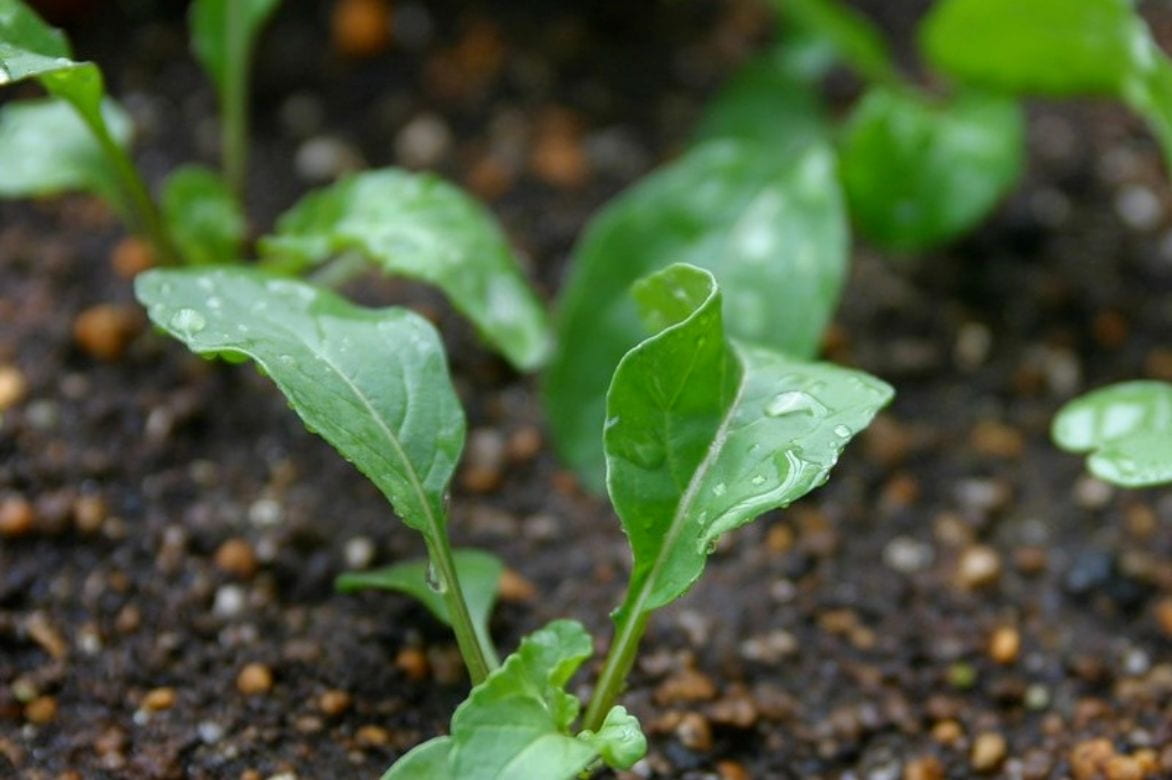 When the young rocket plants have 3 to 4 leaves, they can be thinned out
When the young rocket plants have 3 to 4 leaves, they can be thinned out
Knowing that transplanting stresses rocket plants, sowing in pots can lead to failures. However, you can try by sowing only one seed per pot. Transplanting should be done with the root ball to avoid breaking the plant.
Read also
Bolting: when plants are going to seedWhat care is needed for a bountiful rocket harvest?
Rocket does not like overly dry soils, so it is essential to water regularly. Without watering, the leaves become prickly, fibrous, and too tough. Moreover, dry soil encourages bolting. Therefore, to ensure the tenderness of the leaves, water! To space out watering, mulching proves effective. It also has the added benefit of limiting the growth of weeds.
In fact, hoeing and weeding are also recommended to facilitate water penetration.
As for the enemies of rocket, they are few. Only the cabbage flea beetle can attack the leaves by piercing them with a multitude of small holes. This little beetle naturally disappears with watering and hoeing or with sprays of garlic decoctions or a manure of wormwood, tansy, or nettle. Insect nets are also very effective as a preventive measure. Similarly, it is advisable to keep rocket away from cabbages or turnips, which are regularly attacked by the flea beetle.
On the other hand, you will be pleased to learn that slugs noticeably avoid young rocket plants.
When and how to harvest rocket?
About forty days after sowing, the first juvenile leaves of rocket can be harvested. Cut the leaves as needed, just above the collar. Other leaves will grow a few weeks later. However, as the days go by, the leaves become tougher and spicier.
Rocket only keeps for 3 to 4 days in the vegetable drawer of the fridge.
If you wish to harvest some seeds, allow the plant to flower. After the flowers, small cone-shaped capsules will appear. Cut the stems and let them dry to collect the seeds. Rocket seeds have a germination lifespan of 3 to 4 years.
How to consume rocket leaves?
Aside from its taste quality, rocket is rich in nutritional benefits. It contains a good amount of fibre, vitamins A, C, E, K, and B9, trace elements, and antioxidants, while being low in calories. This is why including it in your menu offers numerous advantages.
Of course, rocket is excellent in salads, simply dressed with olive oil and mustard. It also pairs easily with cured ham or cheeses such as blue cheese, goat cheese, feta, or parmesan.
In Italian cuisine, it is often found on pizzas or in risottos.

Raw, rocket leaves enhance pizzas
It also adds a lot of flavour to stews or soups. Finally, it can be made into an excellent pesto to complement a pasta dish.
My rocket pesto recipe
- 250 g of rocket leaves
- 40 g of basil
- 80 g of pine nuts or walnuts
- 100 g of Parmigiano Reggiano (essentially parmesan)
- 120 ml of olive oil
- 1 clove of garlic
- salt and pepper.
Toast the pine nuts and walnuts for a few minutes in a pan. Then place them in the blender with the rocket, basil, parmesan, garlic, and olive oil. Add a little water if the mixture is too thick. Season with salt and pepper.
Did you know?
- On the island of Ischia, located in the Bay of Naples, a liqueur is made from rocket leaves, to which citrus tree peels, herbs, and roots are added. This is Rucolino, a slightly bitter amber liqueur.
- Tamarind oil or jamba is an oil made from rocket. It is known for nourishing hair and alleviating acne.
- Rocket seeds are also consumed as a condiment, similar to mustard seeds.
For further reading
Do you love rocket mixed in a young shoot salad? Discover our selection of mesclun with varying degrees of sweetness to sow in the vegetable garden.
- Subscribe!
- Contents































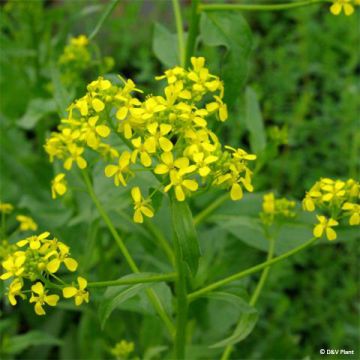

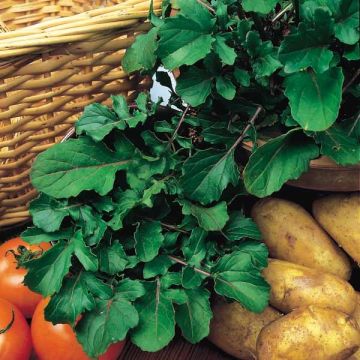
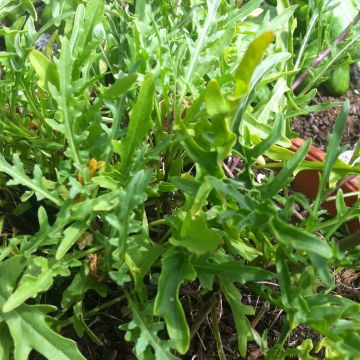
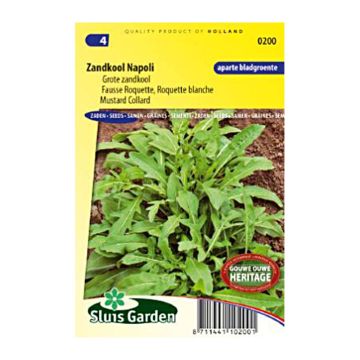
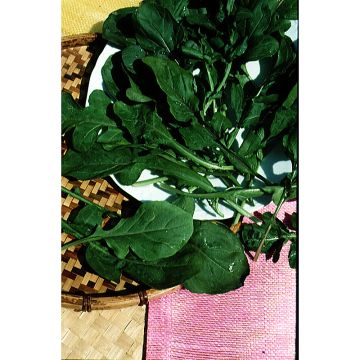
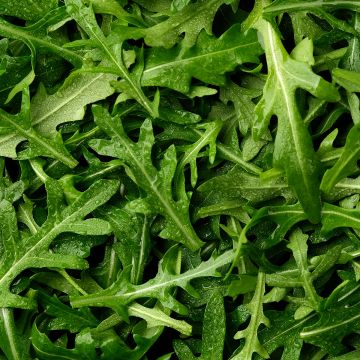
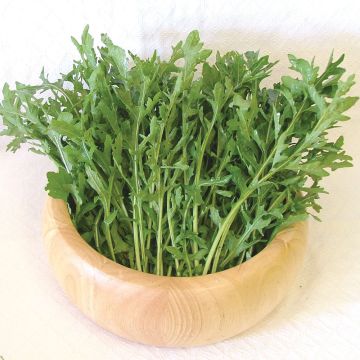

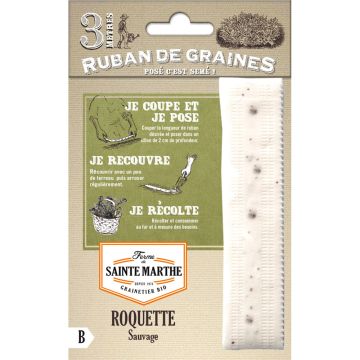
Comments